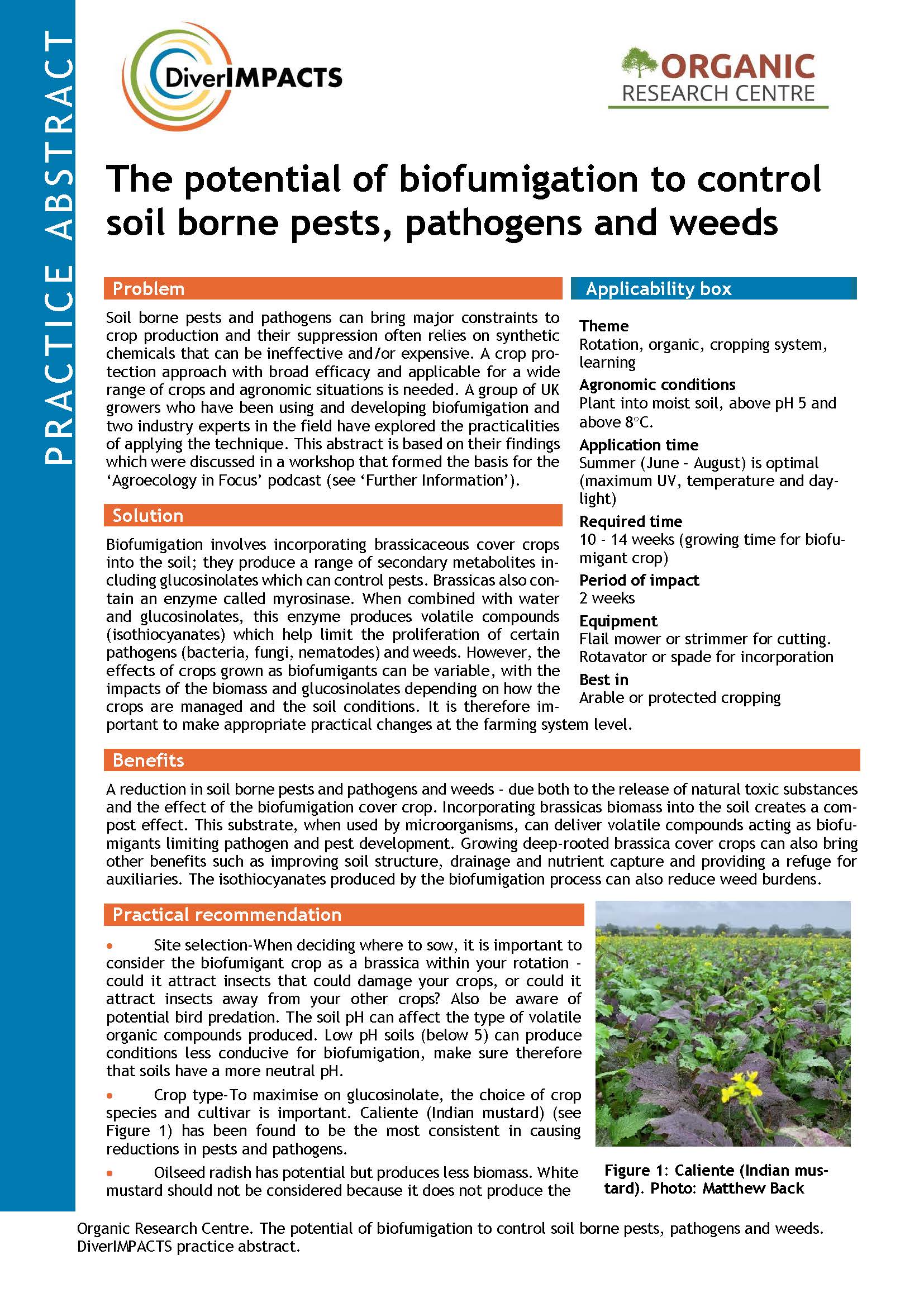The potential of biofumigation to control soil borne pests, pathogens and weeds
Author: Janie Caldbeck
Problem: Soil borne pests and pathogens can bring major constraints to crop production and their suppression often relies on synthetic chemicals that can be ineffective and/or expensive. A crop protection approach with broad efficacy and applicable for a wide range of crops and agronomic situations is needed. A group of UK growers who have been using and developing biofumigation and two industry experts in the field have explored the practicalities of applying the technique. This abstract is based on their findings which were discussed in a workshop that formed the basis for the ‘Agroecology in Focus’ podcast (see ‘Further Information’).
Solution: Biofumigation involves incorporating brassicaceous cover crops into the soil; they produce a range of secondary metabolites including glucosinolates which can control pests. Brassicas also contain an enzyme called myrosinase. When combined with water and glucosinolates, this enzyme produces volatile compounds (isothiocyanates) which help limit the proliferation of certain pathogens (bacteria, fungi, nematodes) and weeds. However, the effects of crops grown as biofumigants can be variable, with the impacts of the biomass and glucosinolates depending on how the crops are managed and the soil conditions. It is therefore important to make appropriate practical changes at the farming system level.
zenodo.org: The potential of biofumigation to control soil borne pests, pathogens and weeds

 toccare e scorrere fino al comando Aggiungi alla schermata iniziale.
toccare e scorrere fino al comando Aggiungi alla schermata iniziale.